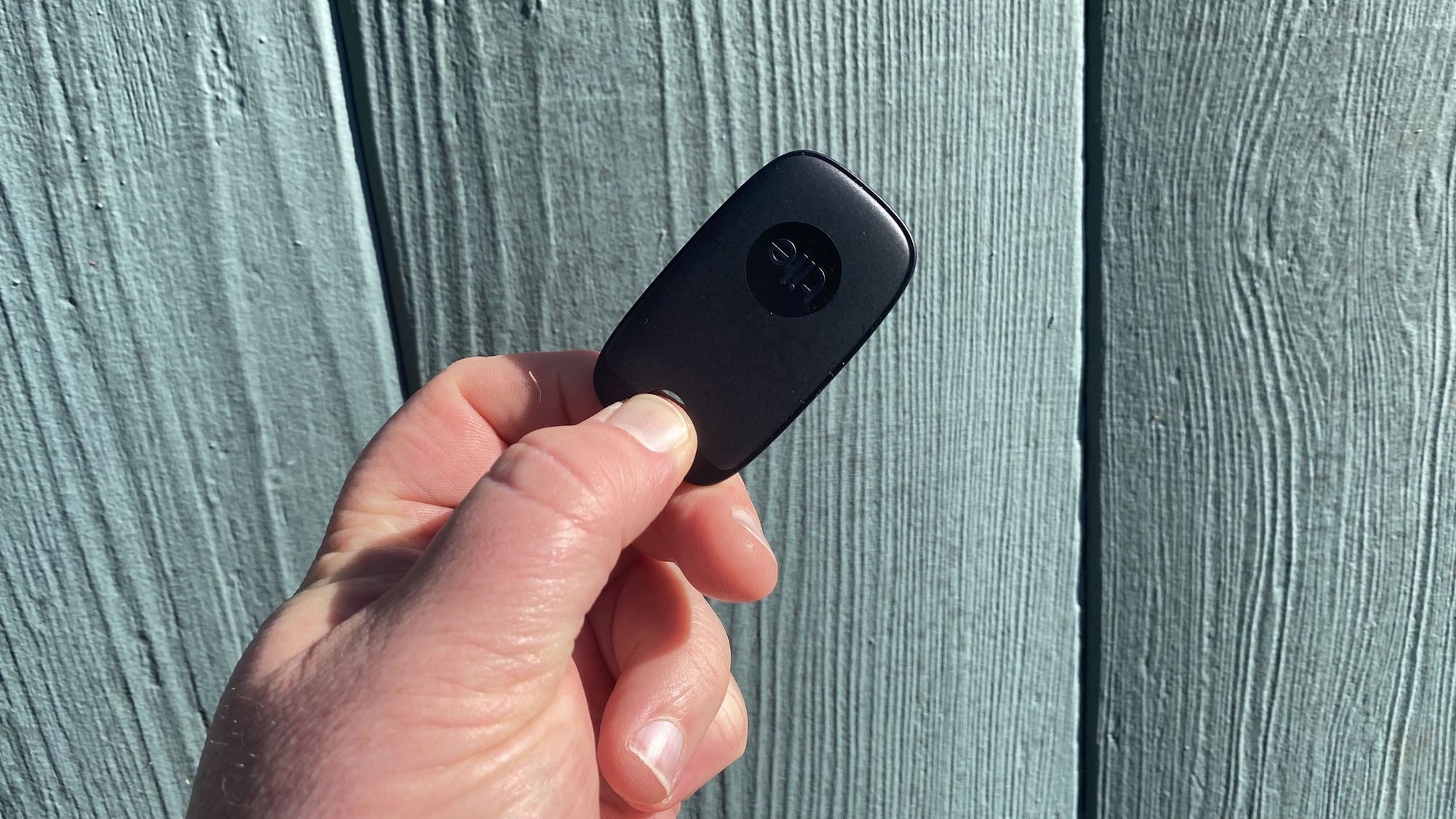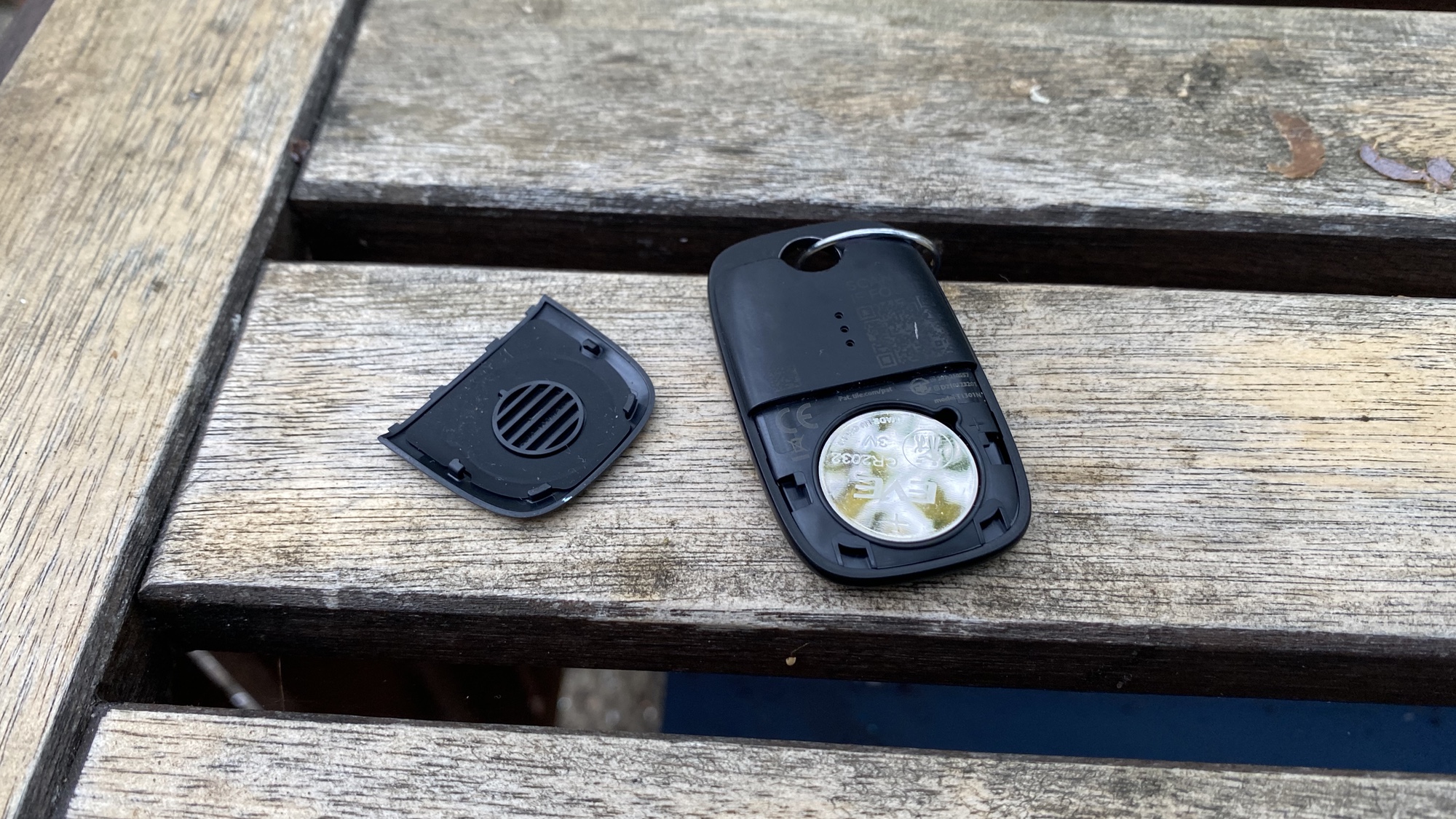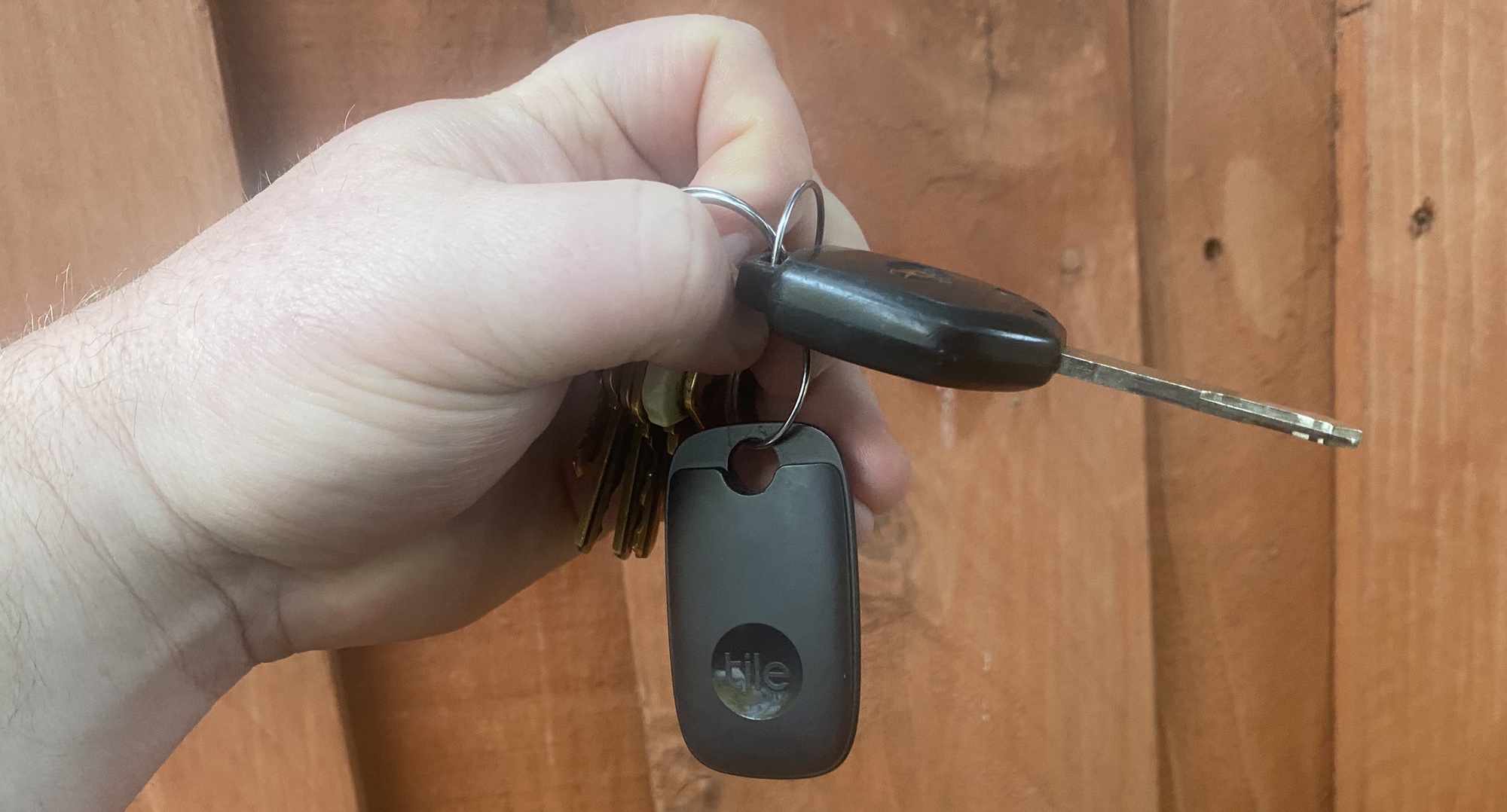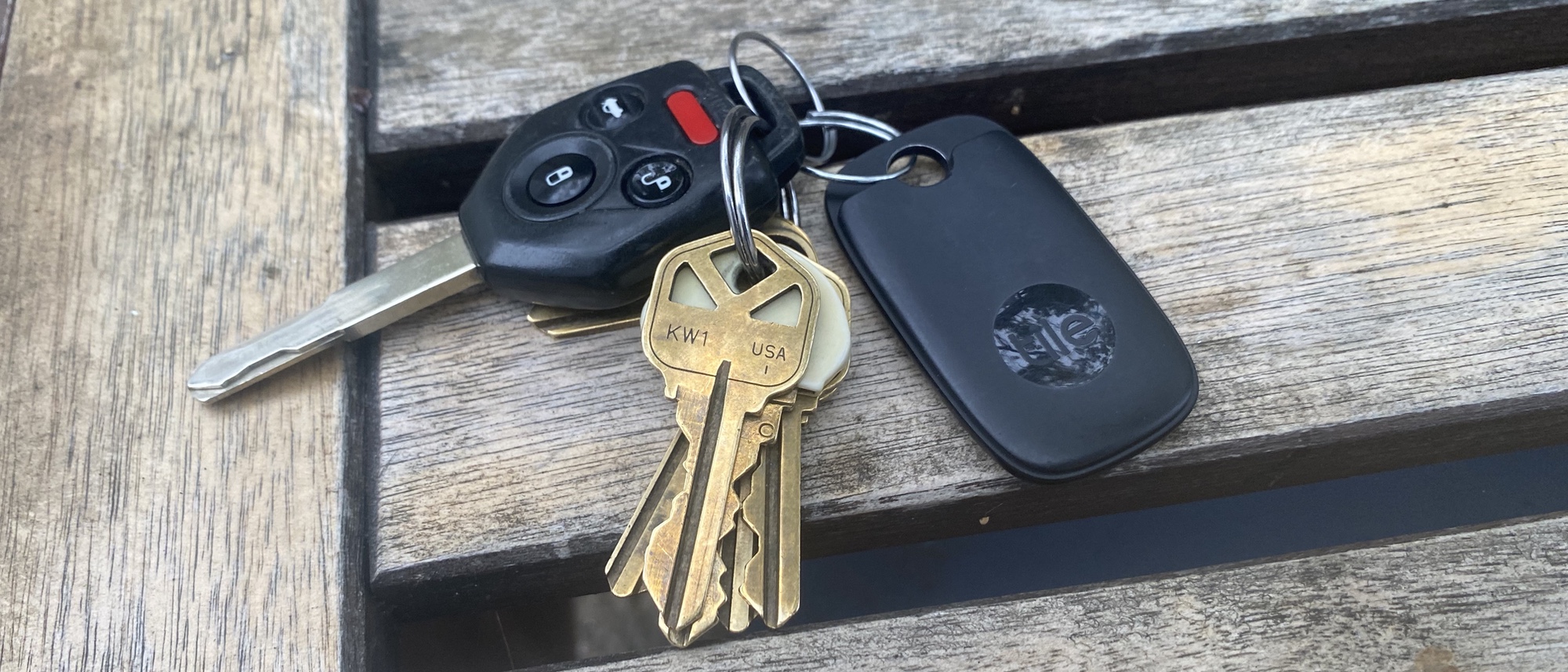Tom's Guide Verdict
If you want the key finder with the widest range and a loud alarm, look no further than the latest edition of the Tile Pro. All the great features from previous models return in the 2022 version, and unlike Apple's AirTag, you can use Tile's key finder to track down your phone.
Pros
- +
Wide range
- +
Loud alarm
- +
Battery is easy to replace
- +
Two-way find feature for locating your phone
Cons
- -
Costs more than rival key finders
- -
New design looks pretty plain
Why you can trust Tom's Guide
Size: 2.3 x 1.3 x 0.3 inches
Listed range: Up to 400 feet
Tested range: 200-plus feet
Water-resistance?: IP67
Battery: Replaceable CR2032/1 year
Colors: Black, White
The Tile Pro (2022) remains the best key finder you can buy, even as Tile faces stepped up competition from the likes of Apple and Samsung. For this year's version of its top-of-the-line tracker, Tile has introduced a new design while maintaining the same best-in-class features that has made the Pro our go-to recommendation in recent years.
The Tile Pro's new look won't be to everyone's liking, especially when compared to the stylish design of previous Tiles. But the things that make the Tile Pro our favorite key finder return in the 2022 version. And the fact that all its features are available regardless of what device you use — something the Apple AirTag and Samsung SmartTag can't claim — makes the Tile Pro (2022) the best key finder for the widest number of users.
Tile Pro review: Price and availability
At $34, the Tile Pro (2022) remains the most expensive of Tile's key trackers, topping the new Tile Mate's price by $10. That's also $5 more than what Apple charges for a SmartTag. You can reduce the per-device price of the Tile Pro by buying the key finder as part of a bundle, which Tile offers at its online store.
Tile Pro review: Design and features
If you're familiar with the Tile Pro, the first thing you'll notice is how the 2022 model's look differs from past versions. The Tile Pro (2020) offered a square shape, with a Tile logo in the middle that you could press to aid in setup and access its two-way find feature. The Tile logo/button remains on the Tile Pro (2022), but the new model looks more like a traditional key fob: rectangular with rounded corners.

I've always been impressed with the care Tile put into how its higher-end key finder looked as that was one of the ways the Tile Pro stood out from other trackers. These days, Tile must be content to let the Pro's features do the talking because the new design is pretty indistinguishable from other trackers on the market. It's not that the Tile Pro (2022) is ugly or plain — it's just... ordinary.
At least there's a practical benefit to the new look. Previously, Tile only promised that the Pro could withstand splashes of water. This new version offers IP67 water resistance, meaning it can take a small dunk without suffering damage.
While the Tile Pro looks different this year, the feature set remains familiar if you used one of Tile's products in the past. You pair your tracker over Bluetooth with an Android or iOS app on your phone. You can then track down anything attached to the Tile Pro just by firing up the app and tapping a button to sound the key finder's very loud alarm.

The Tile Pro continues to rely solely on Bluetooth at a time when other key finders — notably Apple Tag and Samsung's SmartTag Plus — support Ultra Wideband for more precise finding. If that's a feature you'd want, you may want to hold off until early next year when the Tile Ultra is expected to deliver that capability to Tile's key finders.
Until then, the Tile Pro can do something Apple's AirTag cannot — you can press a button on the key finder to make your phone buzz and beep. I find that particularly helpful when I've mislaid my iPhone, which actually happens with greater frequency than losing my keys. The Tile Pro continues to feature a replaceable battery, and it's easy enough to slide open the back panel and swap in a new CR2032 battery when required. You shouldn't have to do that for about a year, according to Tile's estimates.
Tile Pro Review: Performance
The Tile Pro (2020) may look different from its predecessors, but little has changed with its performance. The alarm is still the loudest Tile has to offer; I could hear it clearly from a room away when I used the app on my iPhone to locate the Tile Pro, as it sat in a coat pocket inside a closet. Testing the Tile Pro in a public park, I could still hear the alarm clearly at 120 feet, with the sound not growing faint until around 150 feet.

Speaking of distance testing, Tile promises a range of up to 400 feet with its Pro tracker. I'd say that's pretty accurate, as during my park testing, I could still pick up a signal on my phone from more than 200 feet away. Be aware, though, that performance can vary based on physical barriers and over-the-air interference. In that same park, I walked in a different direction where a nearby building blocked the Tile Pro's signal at around 180 feet. In a different testing locale — one with a greater incidence of radio interference — I could only get 90 to 100 feet away before dropping my connection. The Tile Pro has a good range, overall, but your mileage may vary depending on where you are when you need to connect to your key finder.
The backside of the Tile Pro includes a very faint QR code you'd have to squint to see. This is part of a Lost and Found feature that makes it easier for people to return a truly lost Tile track. All they have to do is scan the QR code with their phone, and that will share contact information with you through the Tile app. It's a less hit-or-miss way of returning your valuables to you than Tile's old "Notify Me When Found" feature. A Scan and Secure capability for making sure people aren't using Tiles to track your whereabouts without your knowledge is arriving next year.

Tile continues to offer a $2.99 Tile Premium subscription that lets you share an unlimited number of Tiles with other family members, receive free battery replacements and get alerts when you leave home without your Tile Pro-attached item in tow. I continue to feel that you can get by just fine without Tile Premium.
Tile Pro review: Verdict
If you're a current Tile Pro user and happy with the look of your key finder, there's no need to upgrade to the 2022 version of the Tile Pro, which essentially has the same features. Just keep swapping out that battery every year.
But people who need a new key finder and want one that offers the widest range, loudest alarm and most complete feature set across both Android and iOS should turn to the Tile Pro (2022). It remains the best choice in a crowded key finder field.
Philip Michaels is a Managing Editor at Tom's Guide. He's been covering personal technology since 1999 and was in the building when Steve Jobs showed off the iPhone for the first time. He's been evaluating smartphones since that first iPhone debuted in 2007, and he's been following phone carriers and smartphone plans since 2015. He has strong opinions about Apple, the Oakland Athletics, old movies and proper butchery techniques. Follow him at @PhilipMichaels.
-
xz4gb8 Reply
Dinging the new Pro for being plain? Oh, pshaw. The narrowing by 25% or so from the older tile pro makes the new pro less likely to twist and tangle. It also looks like a standard key fob so is less a target for immediate destruction by malefactors. The plain smooth surface and rounded corners also helps reduce tangling.admin said:The Tile Pro (2022) gets a new look in the latest version of this key finder, though its top features — wide range and a loud alarm — remain intact. Here's why it's the best key finder available.
Tile Pro (2022) review: Still the best key finder you can buy : Read more
My biggest complaint is Tile's use of loudest, louder, and loud in documentation instead of decibel ratings. If the difference is only 1 or 2 decibels between models is not worth upgrading. A difference of 8 db makes a world of difference to one who is hearing-impaired. The latter seems to be the difference between either Tile Pro and the best older Mate.
Tech note: The reduced lever arm between the long axis and edge means less twisting force on the connection to the tagged device.



